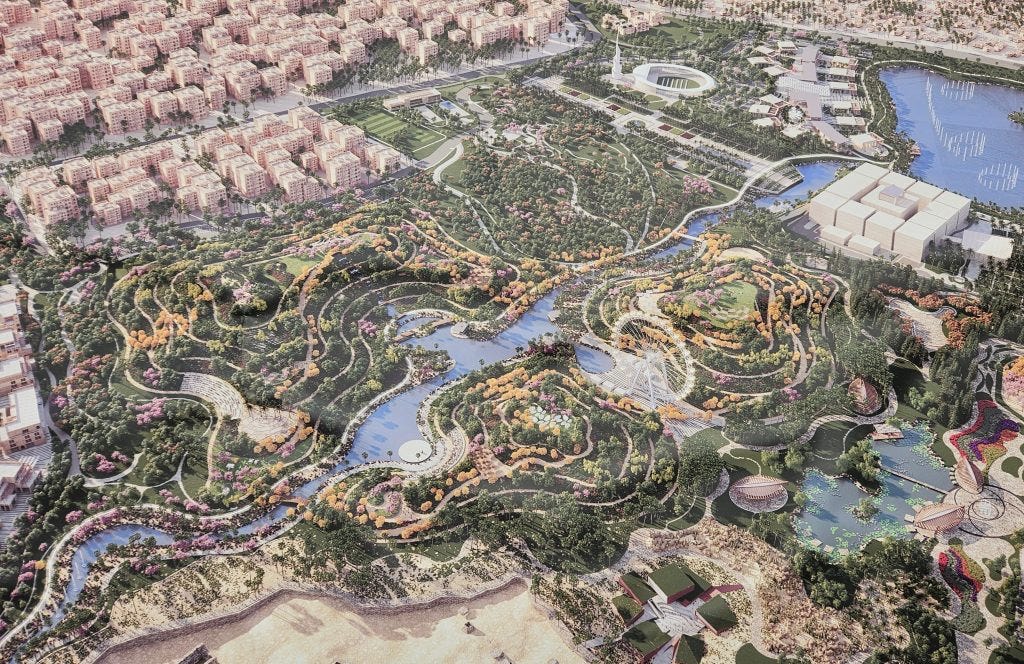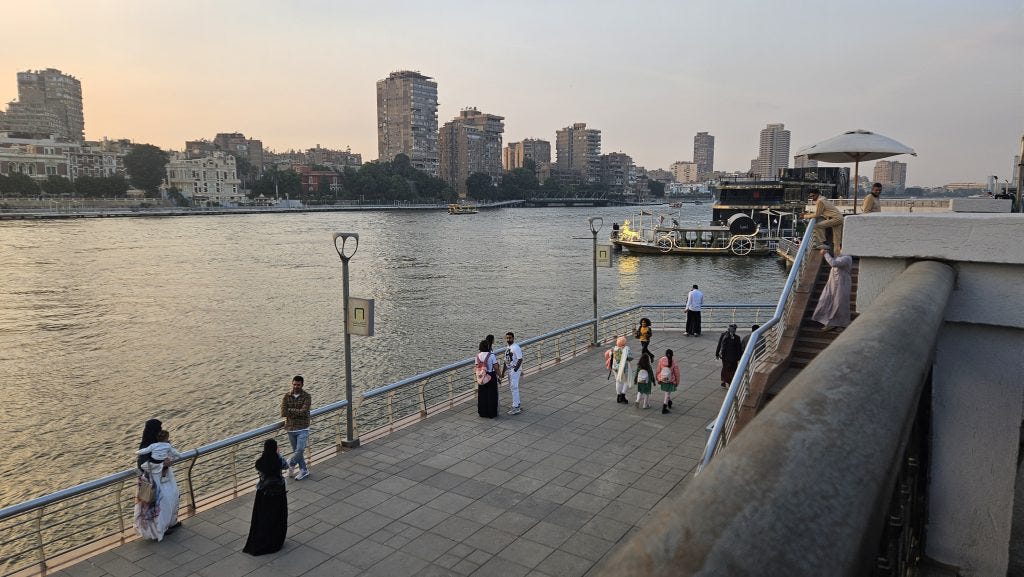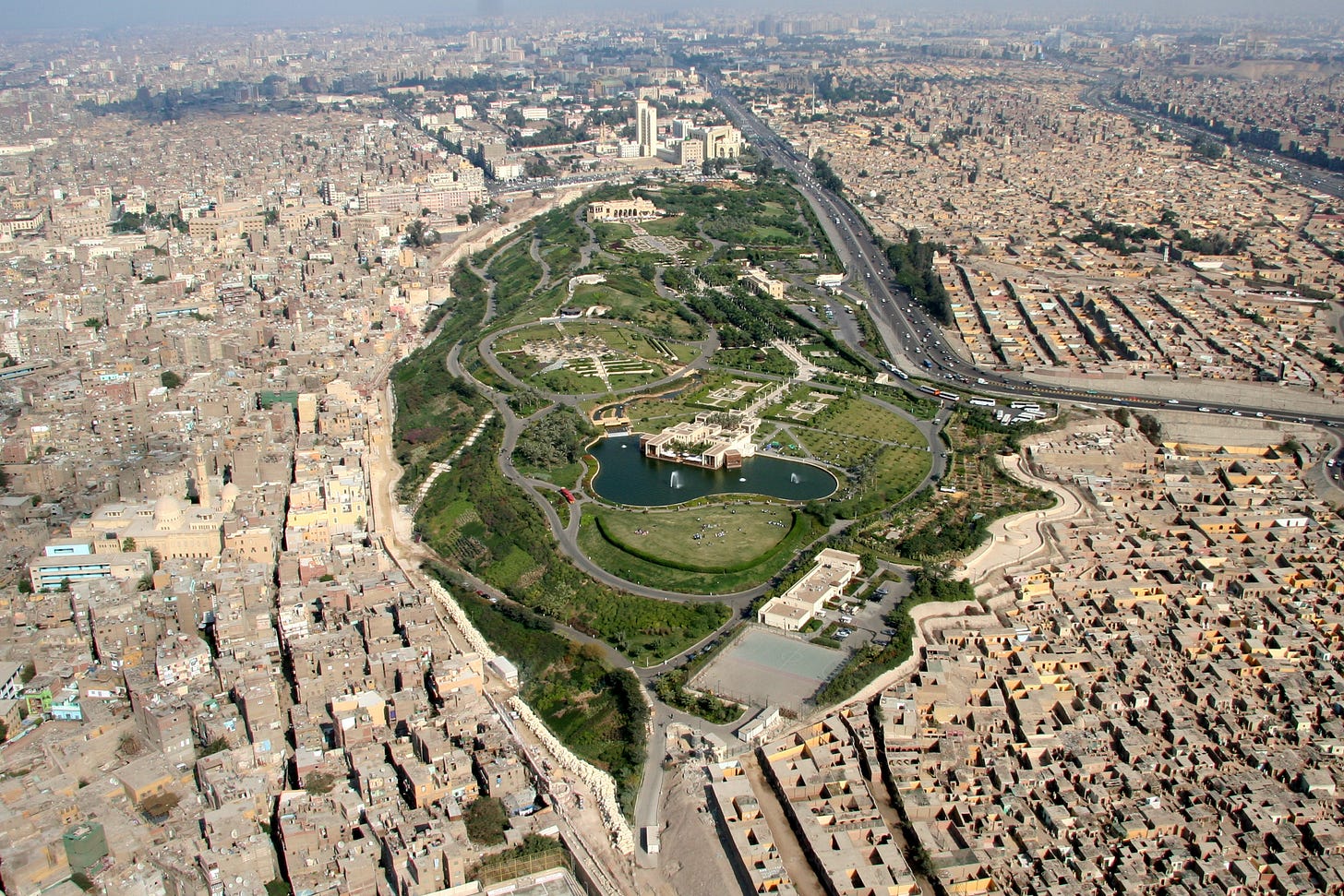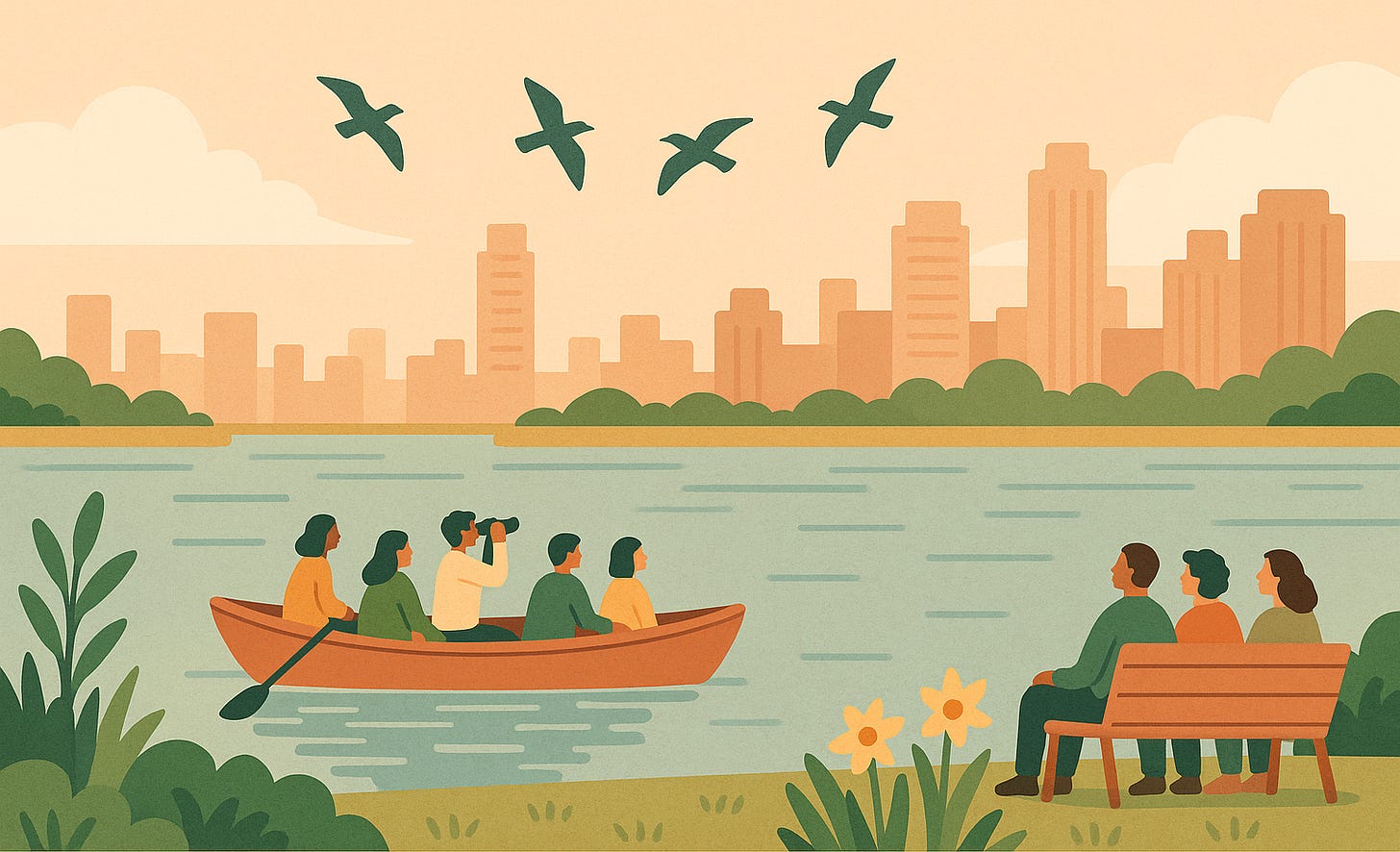Birdsong in the Megacity: Reclaiming Cairo's green and blue spaces
Amid heat, rapid growth, and disappearing public space, citizen-led and nature-based solutions point are path forward.
Sometimes, you have to look hard - not just for solutions in a city, but to understand what the problem really is. Last November, I travelled to Cairo, Egypt, for UN Habitat’s 12th World Urban Forum. Beyond the conference centre, I went searching for green and blue spaces to understand how they can survive or even thrive in a place as large and hot as Cairo.
The Elusive Green in Cairo
Given the dry, hot desert climate, creating and maintaining green spaces in the Egyptian capital has always been a challenge. But Cairo used to have many large, beautiful trees and parks, most of them planted and created in the 19th century when the trend was to create a “Paris by the Nile”.
Today, Cairo struggles with air pollution, water stress, traffic congestion, housing shortages, extreme heat, and conflicts over land use. Around 23 million people live in the Egyptian capital. Its green space is very limited: Cairenes, the people of Cairo, have less than 1 square metre of green space each – the WHO recommends 9 square metres per person, and cities like London boast up to 95 square metres. Mexico City offers 28 and Dubai 6.
Thinking that I would need to see the Nile to understand the city better, I tried to access the famous river, but traffic, non-existing sidewalks, and construction sites stopped me. Mamsha Ahl Misr (‘The People’s Walkway’) is one of the few formal riverside spaces. But ticketed, with little shade or biodiversity, it’s not truly public nor ecologically supportive.
Unexpected ecosystems on the Nile
“There’s a purple swamphen!”, Farah, my bird watching guide, points out excitedly. It is 6 am in Cairo and we are on a boat on the Nile. The tour is organised by Dayma, a social enterprise for environmental education that aims at bringing nature closer to the Cairenes.
Hidden among the traffic and the concrete, there are still some valuable wetlands and ecosystems on the Nile. In just two hours, we spotted over 20 different bird species, including kingfishers, moorhens, reed warblers, marsh harriers, and kestrels.

These birds nest and hunt on the green islands in central Cairo, fragile river ecosystems that coexist with the megacity (and, in some cases, host agricultural fields). They offer a glimpse at how citizens might reconnect with the natural core of their city.
“The sense of nature-connectedness in Cairo is still growing”, Farah explains. “With Dayma, we are aiming to sensitise people to nature.” She is also questioning the prevailing idea that nature always has to be green by taking people to blue spaces, to the desert, and to protected areas like the Wadi Degla Canyon around the city.
Quiet, informal citizen action
Dayma is not the only initiative that wants to protect Cairo’s nature. Other local efforts to protect and create green and blue spaces in the city include:
Grassroots collectives planting and re-planting trees for shade and fruit mobilising on Facebook
Rooftop farms emerging across the city
Heritage experts draining damaging groundwater to irrigate parks and small farms
These examples show that not every city has sweeping reforms to create sustainable, resilient spaces. Instead, often it is the quiet, informal processes, deeply rooted in local knowledge and tradition, that can make a big change.
When public green becomes private
“The smells of trees and grass is an amazing experience”, “an air of calm in the midst of a hot and crowded Cairo” – reviews of the large Al-Azhar Park show that Cairenes are craving some respite from the heat and the concrete of their city. The few parks in the city are well-frequented. Those who can afford to often move out to the suburbs where they can have a garden.
However, much of Cairo’s green (and blue) space is gated and ticketed, or reserved for tourists. Excursions at the World Urban Forum gave us deeper insights into these development projects in Cairo:
El-Fustat, a new pleasure park where public space is being reshaped for wealthy visitors, replacing the former home of artisans in informal housing
Al-Asmarat, a social housing project outside the city for displaced communities, where even some fake grass is presented as progress
The New Administrative Capital, a desert megaproject modelled on Dubai, where the exclusive “Green River” park demands intense irrigation

Overall, the trend in Cairo appears to be a growth of infrastructure at the expense of green and blue space, which also means at the expense of ways to cool the sweltering city. There is less shade with every tree felled down, less breeze from the Nile with every new high-rise built next to its banks.
Nature is not a luxury
In a megacity like Cairo, land is naturally scarce. Egypt’s president has promised to deliver large infrastructure projects for housing and transport. They are taking a toll on the city where green and blue space is seen as expendable to encourage further commercial development.
This leads to displacement and exclusivity, where green spaces come with high entrance fees or limited access. Cairo is marketing itself more and more to tourists at the expense of its citizens.

There are also gaps in enforcement. For example, under Egypt’s Environmental Law, it is illegal to cut down trees. But the act of doing so is rarely punished, leaving citizens who witness the demolitions of their beloved trees with nowhere to turn.
Why blue-green solutions still matter
It is not rare anymore for summer temperatures in Cairo to surpass 40 degrees in summer. At the same time, around 16 per cent of annual premature deaths in Cairo come from air pollution. The loss of shade and cooler surfaces is leading to hotter streets and increasing the urban heat island effect. It also causes new challenges, such as losing green islands that used to help residents cross streets, less walkability, and less inclusivity due to the commercialisation of parks.
When it rains on my first day in the Egyptian capital, panic breaks out and storekeepers use brooms in a desperate attempt to keep out the water. This little glimpse into the effect of rainfalls that are set to occur more often already demonstrates the importance of having some green and blue spaces that can absorb water, while also curbing the urban heat island effect.
With these competing priorities and with the pressures of housing, traffic, and poverty, nature is often viewed as secondary. But it holds the key to solve many of Cairo’s challenges, first and foremost the urban heat islands that increase temperatures in the city by as much as 6.5°C. Nature-based solutions that are climate-responsive, culturally grounded, and citizen-led can help to significantly cool the city and clean its air, while also providing recreational spaces and important ecosystems.

A different path forward
Cairo is following a vision of monumental and often exclusive urbanism - Dubai more than Paris. At the same time, its citizens are reconsidering values and fighting for public spaces as an important common good with social and environmental benefits. Now, the challenge is to change political perception to view these spaces as benefits, not burdens.
At the World Urban Forum, the thousands of planning experts were not impressed with superlatives like over 300 kilometres of new streets, large bridges, and gigantic housing developments in the desert. Instead, they discussed how to apply sustainable urban development ideas to Cairo, which is challenging given the circumstances.
But the herons in the Nile would agree: This city could do so well. It does not need another mega-project but instead the political will to support citizen-led, nature-based solutions already working on the ground.




